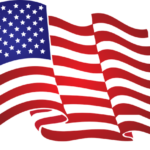Fire Extinguisher Info
CLASSES OF FIRE
Class A - Fires involving solid materials such as wood, paper, cloth, trash, and plastics.
Class B - Fires involving flammable liquids such as gasoline, petroleum oil and paint. Class B also include flammable gases such as propane and butane. This class does not include fires involving cooking oils and grease.
Class C – Fires involving energized electrical equipment such as motors, transformers, and appliances.
Class D - Fires involving combustible metals such as potassium, sodium, aluminum, and magnesium.
Class K - Fires involving cooking oils and greases such as animals fats and vegetable fats.
TYPES OF FIRE EXTINGUISHERS
Water and Foam fire extinguishers work by taking away the heat from the fire. Foam agents will separate the oxygen from the other elements.
Water extinguishers are for Class A fires only and should not be used on Class B or C fires.
Carbon Dioxide fire extinguishers work by taking away the oxygen from the fire and will also remove the heat with a very cold discharge.
Carbon dioxide can be used on Class B & C fires. They are ineffective on Class A fires.
Dry Chemical fire extinguishers work by interrupting the chemical reaction of the fire triangle.
The go to fire extinguisher today is the multipurpose dry chemical that is effective on Class A, B, and C fires.
Wet Chemical is a new agent that works by removing the heat of the fire triangle and prevents re-ignition by creating a barrier between the oxygen and fuel elements.
Halogenated or Clean Agent extinguishers include the halon agents as well as the newer and less ozone depleting halocarbon agents. They work by interrupting the chemical reaction of the fire triangle.
Clean agent extinguishers are primarily for Class B & C fires. Some larger clean agent extinguishers can be used on Class A, B, and C fires.
Dry Powder extinguishers are similar to dry chemical except that they extinguish the fire by separating the fuel from the oxygen element or by removing the heat element of the fire triangle.
However, dry powder extinguishers are for Class D or combustible metal fires, only. They are ineffective on all other classes of fires.
Water Mist extinguishers are a recent development that extinguish the fire by taking away the heat element of the fire triangle. They are an alternative to the clean agent extinguishers where contamination is a concern.
Water mist extinguishers are primarily for Class A fires, although they are safe for use on Class C fires as well.
Cartridge Operated Dry Chemical fire extinguishers work by interrupting the chemical reaction of the fire triangle.
Like the stored pressure dry chemical extinguishers, the multipurpose dry chemical is effective on Class A, B, and C fires. This agent also works by creating a barrier between the oxygen element and the fuel element on Class A fires.


